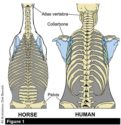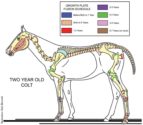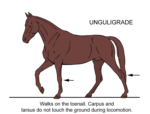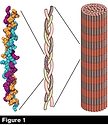Advertise Follow Us
Articles by Deb Bennett
In this sixth installment, Dr. Deb Bennett discusses the impact of the equine joint shape on the horse’s forelimb
Read More
Equine Reciprocating Systems: Periosteum, Joints and Growth
In the fifth in this series, Dr. Deb Bennett illustrates how the horse matures and the role joints play in locomotion
Read More
Equine Reciprocating Systems: Examining the Shoulder to Thorax Junction
In the fourth in this series, Dr. Deb Bennett illustrates the relationship between the horse’s forelimb and the body.
Read More
Equine Reciprocating Systems: Connecting Tendon to Bone
The third installment of this series examines bone formation and its relationship to the muscle tendon
Read More
Equine Reciprocating Systems: Interosseous Muscles to the Suspensory Apparatus
In this second in a series, Dr. Deb Bennet continues a discussion of the horse’s forefoot becoming a single digit.
Read More
Understanding Ligaments and Tendons in Horses
In this first in a series, Dr. Deb Bennett discusses the scope of her anatomy lessons and misconceptions she finds with ligaments and tendons.
Read More












